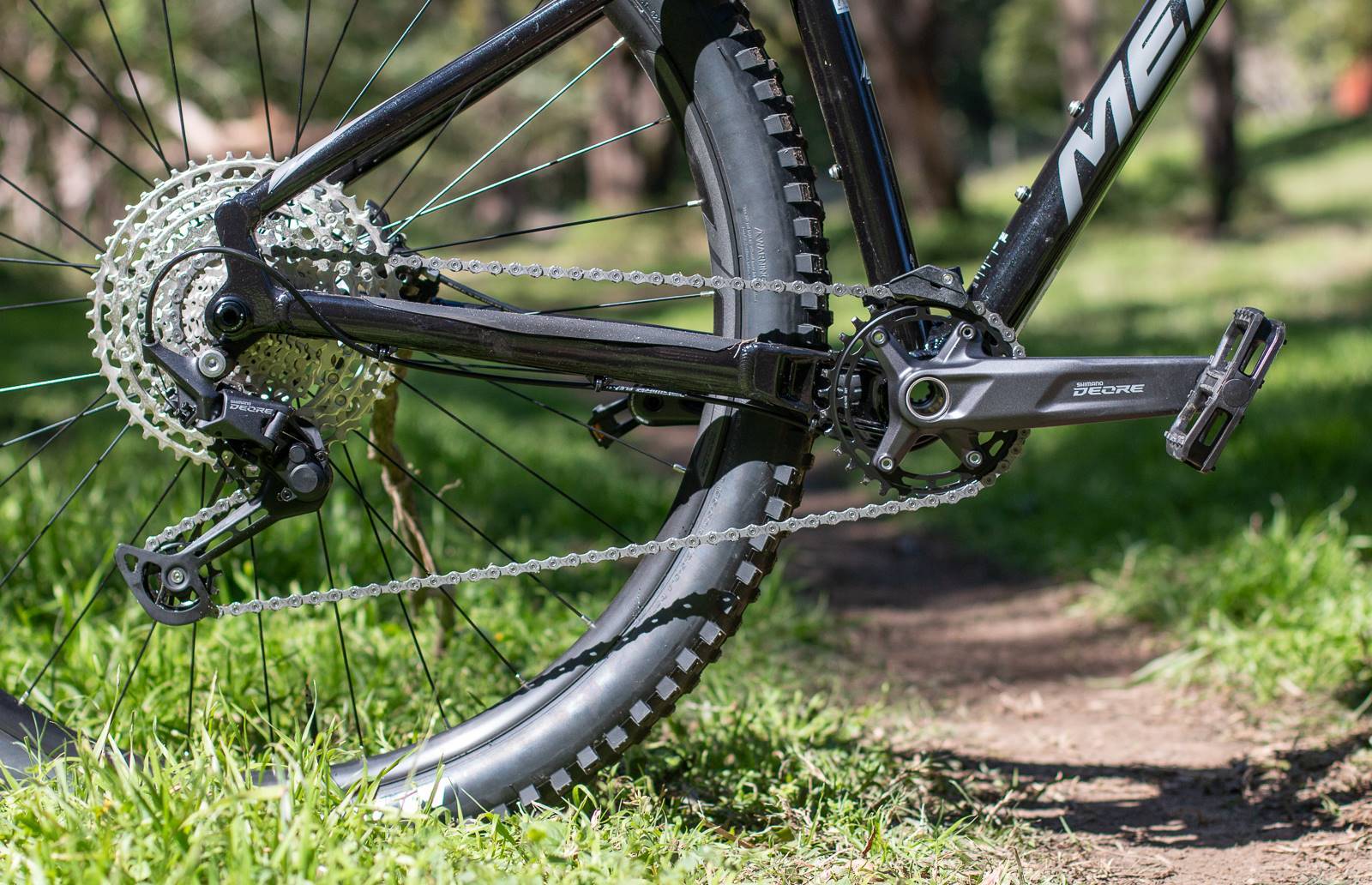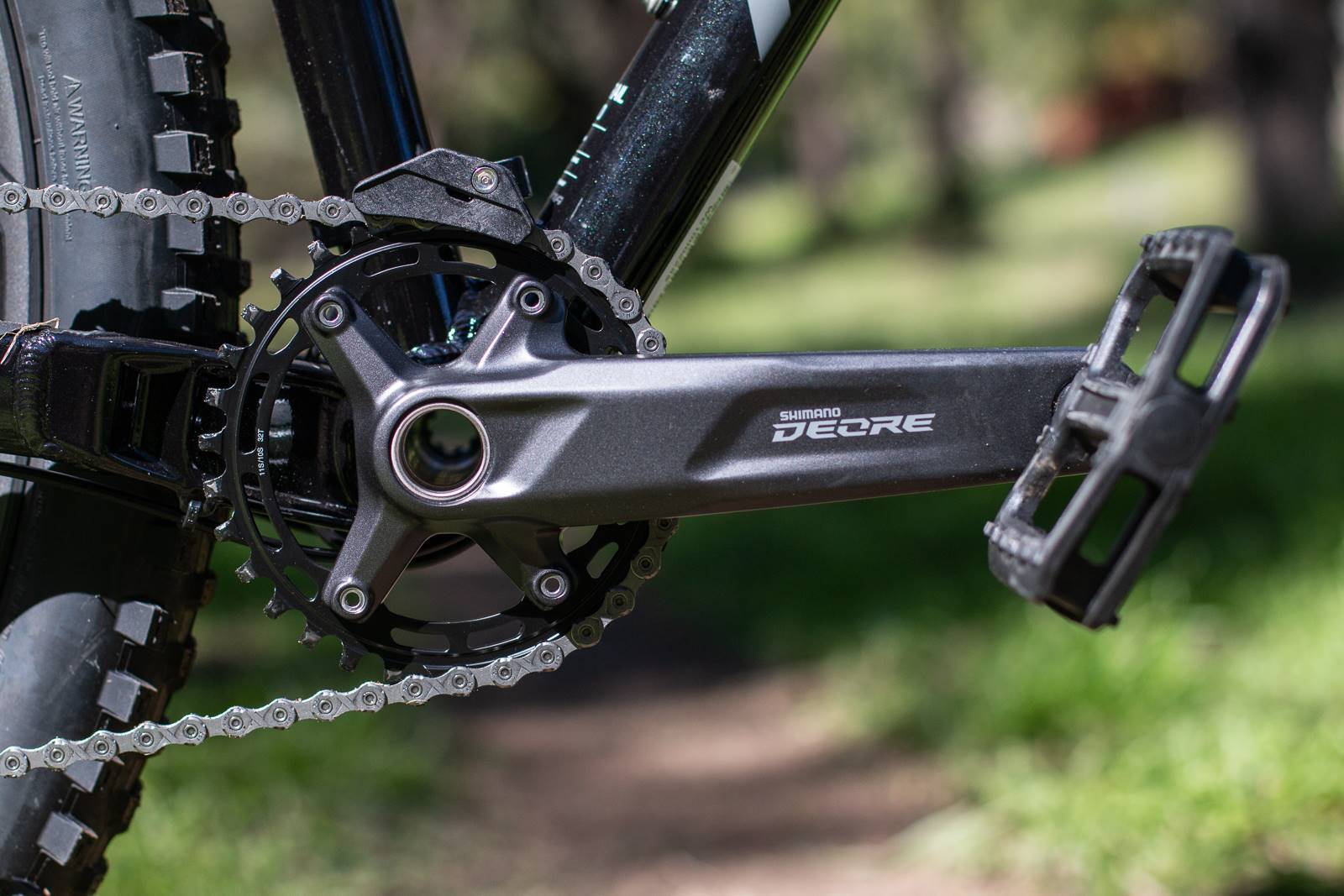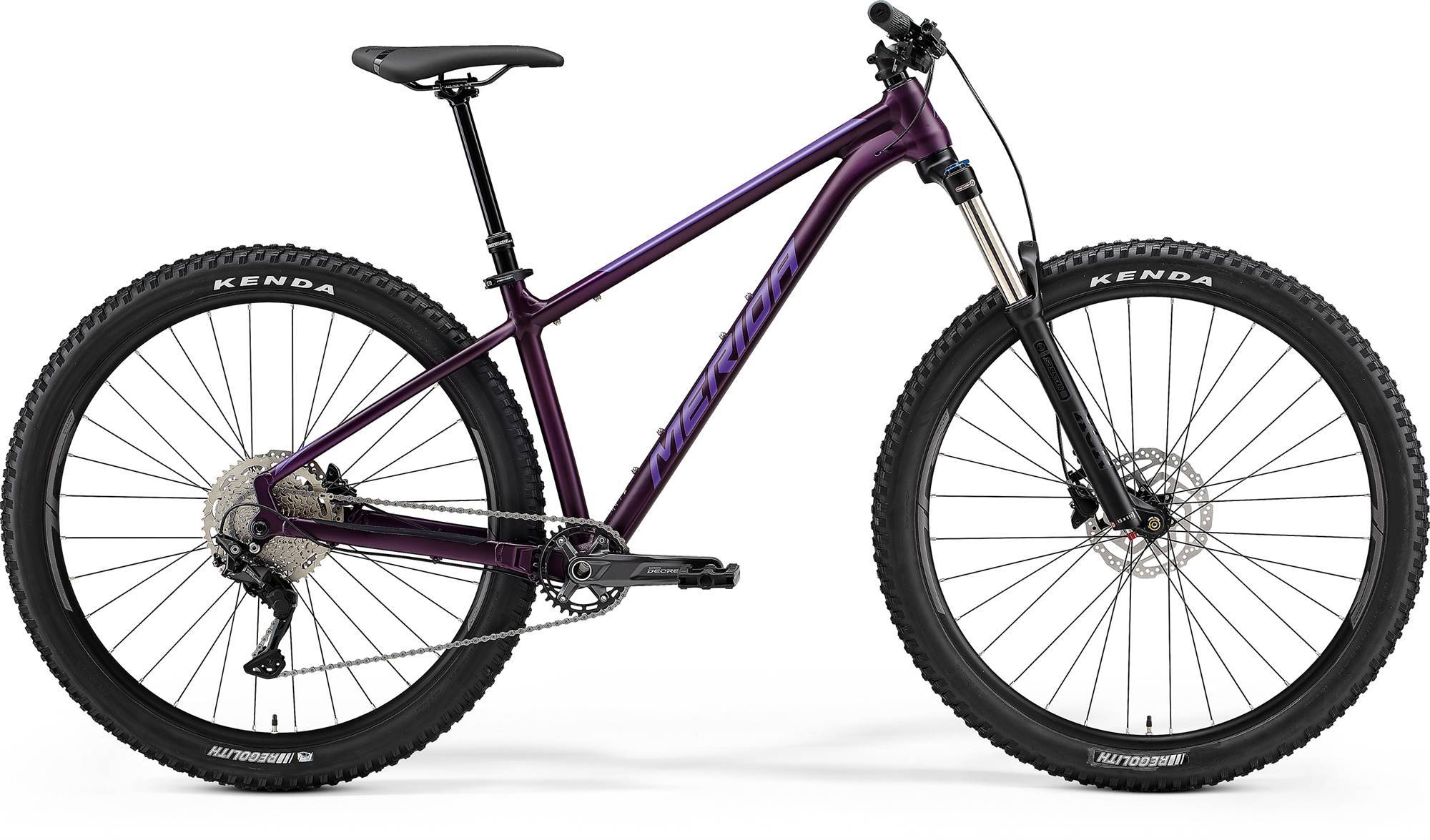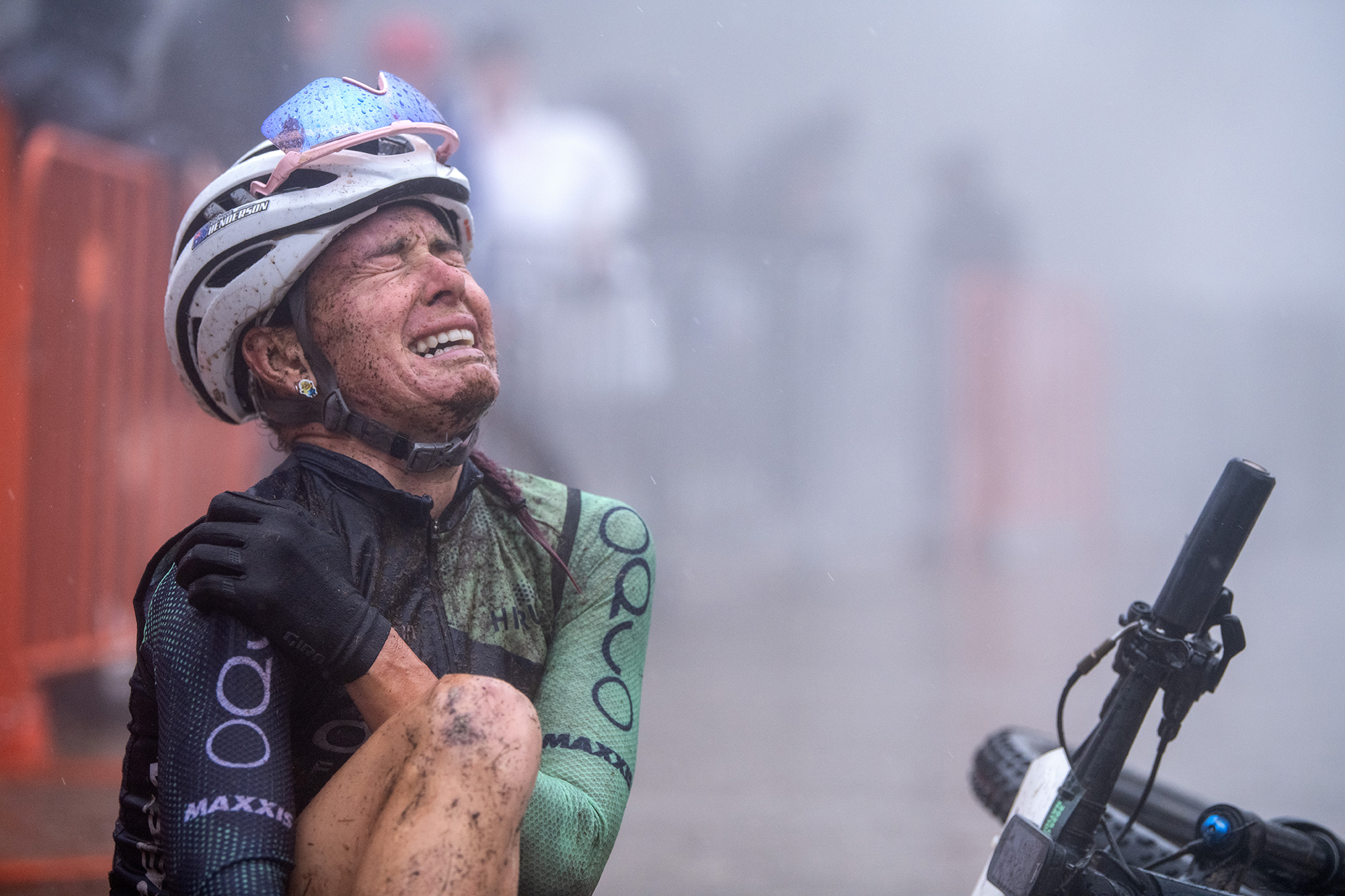Merida's new Big Trail hardtail
The new Merida Big.Trail is the kind of hardtail you'll want to ride.
The Merida Big Trail has had a facelift for 2021, being revamped into a 29er trail hardtail. Following shifts from other trail hardtails like the Norco Torrent, the Big.Trail has dropped the Plus sized wheels in favour of 29" hoops with the clearance for tyres up to 2.5". Add in good trail geometry and a handy tick list of specs you'd want for a trail hardtail, and Merida's Big.Trail shows that the hardtail is not dead!
Merida claim that with input from British Merida dealers, the new Big.Trail really delivers for the needs of riders looking at a hardtail for their journey into the world of dirt. England may well be the home of the hardcore hardtail, but a hardtail with modern trail geometry, a long dropper post, strong brakes, clearance for big tyres and a long travel fork will serve many riders the world over.
Merida Big.Nine and Big.Seven models fly out of the doors of bike shops and onto the trails. The Big.Nine and Big.Seven have a real cross-country purpose. And while there isn't anything wrong with that, the Big.Trail aims to provide a hardtail trail bike at a wide range of price points. There are four models in the 2021 Merida Big Trail range, with prices starting at $1249 for the Big.Trail 200 and running to $2299 for the Big Trail 600. The Big.Trail 500 we have on test sells for $1849, which is great value for the parts and the ride it delivers.

Compared to the Merida Big.Trail 800 we tested in 2016, the bike has continued to evolve. A few years back trail hardtails were heading in a Plus wheel size direction, which is 27.5+ wheels with very wide rims and tyres typically in the 2.8"-3.0" range. The benefits of greater traction and some increased cush in the back end were very real. But it often resulted in heavy wheels, some clearance issues in mud, and the potential for a lot of tyre squirm when hunting for the low pressures to deliver the traction and compliance that Plus tyres promised. Moving to a 29" wheel with 2.4" tyres will provide the fast rolling stability of a 29er, with less concerns about sidewall cuts on thin Plus tyres.

All four Merida Big.Trail models are built around the one very capable frame with a 140mm travel fork, 2.4" tyres, tubeless ready rims with a 29mm internal width, and 12, 11 or 10 speed Shimano Deore 1x drivetrains.

The frame is built with modern geometry in mind, so that's longer, lower, slacker. With a head angle of 65.5 degrees and a seat angle of 75.5 degrees across all four sizes, Merida have been a little more progressive than they have been in the past with geometry. The reach is 455mm in a large and 435mm in a medium, which we have on test.

Given the frame stand over is huge, Merida have not only been able to spec long dropper posts on all but the cheapest model, but it allows you to size more by reach, than seat height. So even a rider who is a little shorter might be able to ride up a size if they want a longer, and more stable bike, without running into issues with seat post insertion into the frame. The M, L and XL bikes have 150mm droppers, while the S size has 125mm.

Merida have included two water bottle mounts, and they're both on the downtube. I don't think you will be able to fit much in the top one on the small and medium frames, but on the larger frames you will manage two bottles on the down tube – which is really handy.

There's also an accessory mount on the underside of the top tube, something a lot of new bikes are coming with. The idea is you can mount spares there, and do away with any straps on the frame that can either move around a little, or scratch your frame up.

To help preserve a clean appearance, Merida also have internal routing on all the frames. Not to be a hater, it is rudimentary internal routing, but done well. There are holes in the frame on the left for the brake hose and rear derailleur cable outer, with one hole for the dropper on the right hand side. There's no option to switch the brake hose to the right hand side, which means left to rear brake users will always have the hose coming back around to the left of the head tube. It's a small detail, but being able to adapt hose routing to suit preferences is a nice touch with some, but not all, internal routing systems.


The back end has clearance for tyres up to 29 x 2.5", with good shaping for heel clearance when pedalling. The chainstay length is 435mm across all four sizes with Boost 148x12mm drop outs. The frames have 73mm bottom bracket drop to help keep your centre of gravity really low, making the bike rail berms like it's on rails!
The forks use a reduced offset, and while the Big.Trail 600 uses 44mm, the RockShox Recon on our test model uses 42mm – as that's the numbers on offer from the two manufacters.

There's also inbuilt fender mounts, but as it's still a well-priced hardtail with German design, there are hidden rack mounts and even hidden mounts for a stand!

The SRAM Universal Derailleur Mount (UDM) is a smart choice. The theory with these is that any SRAM dealer, globally, will have one in stock. There are almost as many derailleur hangers as there are bike models and model years, so fingers crossed more manufacturers continue to adopt this standard. If you've ever had your bike off the trails while waiting for a new hanger to arrive, you'll understand the frustration!
All up, the frame design looks set to deliver a great platform for trail riding, with room to upgrade any of the models as you progress.

A closer look at the Merida Big Trail 500
The Merida Big.Trail 500 we have on test is a medium, and the standover height is pretty epic, allowing lots of room to move around on the trail. All four sizes are designed with lots of standover height, and it's a big bonus for anyone looking at a Big.Trail. If you're a new rider you'll find it a bit more reassuring. If you're experienced, you'll love the room to move. If you're buying a Big.Trail for a growing tween who wants to shred – you'll like the flexibility it allows.


As it is, the 11-speed Shimano Deore group set has excellent ergonomics and a light shift action. The derailleur has a clutch, and if you're keen you can adjust the tension of it as well, if you take the cover off. This might not be the best thing to fiddle with if you're figuring things out, but for any experienced mechanic it's an easy and very useful adjustment to get the sweet spot of shifting tension.
The 32t front chain ring uses a regular Shimano 4-bolt pattern. So if you did want to go up or down a chain ring size it's no big drama.

The Big.Trail does use a 55mm chainline, which helps with keeping plenty of clearance from the tyre. The frame itself still has a lot of clearance for mud and general trail crap, as does the chain ring on the frame.

The Shimano brakes do use the basic lever, which does suit an entry level bike. Getting the cockpit setup for your liking may involve moving the lever a long way inboard and possibly swapping the dropper lever and shifter to run outboard of the lever clamp – it just depends if you will want to try to use the levers like a shorter blade.

The cockpit is otherwise exactly what you'd want, with a nice under the bar Shimano dropper lever, lock on grips and a short stem and low rise bar (both in 35mm). There's about 20mm of spcaers to play with to get your bar height just right.

The lever placement for both the Deore shifter and the Shimano dropper lever fall exactly where you'd want them, and such good ergonomics isn't always available on intermediate or entry level bikes like this one. But, that's one of the big updates to the 10, 11 and 12-speed Shimano Deore group sets, which is why it's good to see the range used across the Big.Trail line up.

The RockShox Recon fork has a top-mounted lock out, plus an airspring and rebound adjustment. The Recon is far from the best fork in the RockShox fleet, but it's got the basics covered, and covered well. The Boost (110x15mm) model fork in 140mm is a good combination for the Big.Trail frame, and spending time getting the fork pressure just right will pay dividends for any owner.

The wheels use Shimano hubs with centrelock rotor attachments, and Merida alloy rims with a 29mm internal width. They're called tubeless ready and they are, to a point. But just about every Merida bike I have built in the last 12 months still comes with crappy rim tape that in no way can be used for tubeless. While I can understand that on a bike for $1849, it's disappointing to see on other models over $6000. I do hope they address this, as other major brands ensure their wheels have tubeless tape and have valves in the box, ready to go.
Still, with some Peaty's 30mm tape and some old valves in my toolbox, the Maxxis Dissector tyres inflated with a track pump, popping into place with ease. A 29mm internal width and 2.4" Maxxis Dissector is a proper rim and tyre interface to take to the trails. Kudos to Merida for speccing this part of the bike so well.

The Shimano brake calipers are a twin piston design, running on 180mm rotors front and rear. While 4-pot brakes are on the Merida Big.Trail 600 model, these brakes are still at a good level. If you need more stopping power, or ride in foul conditions a lot, a rotor upgrade and sinteretd pads may net some more braking power.

The total weight of the Big.Trail 500 in a medium, setup tubeless and without pedals was 13.62kg. That's quite respectable for a bike that sells for $1849. Yes you could make it lighter. But you could also just buy a Big.Nine cross-country hardtail instead.
On the trail with the Merida Big.Nine
This bike is off to a medium sized tester, but given the reasonable reach for a medium frame size, a quick ride on some local trails showed that, as you'd imagine, it was a lot of fun. The shifting is smooth, and the brakes were slowly bedding in during the ride. The fork action is supple, but they felt stiff enough on the friendly local trails.
Merida do state that with the longer reach and low standover, you can size via reach, not seat tube height. And while I could get the seat where I needed to on the medium, I do prefer a longer bike and would opt for a large. But – wow it was fun and agile in a medium!
The Dissectors dug in on the dry terrain and rock on my local mini-loop, and the frame really responded to quick jabs on the pedals and changes of direction. The low bottom bracket rewarded driving out of corners with your feet, and it was easy to loft the front wheel with a weight shift.




































